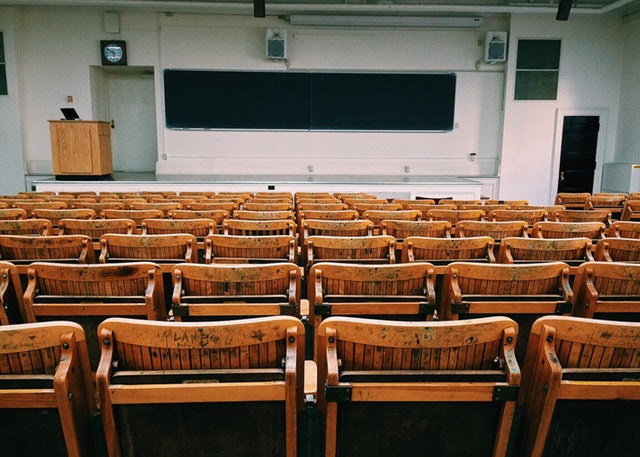
Institutional discrimination is not exclusive to adults—it impacts children, too. Read on to learn more about the inequities in education, as well as legislation enacted by the US government to protect minority students from harassment and discrimination.
Today, the US population is more diverse than ever.
In 2014 the United States reached a milestone. For the first time in the nation’s history, black, Asian, Hispanic, and Native American children made up the majority of students in the public education system.
In years to come, numbers of non-white students are predicted to increase, largely through immigration and birth patterns among Asian and Hispanic populations. According to predictions by the National Center for Educational Statistics, by 2023, almost 55 percent of K-12 pupils will be students of color.
Student populations are evolving. The number of pupils from low-income families is rising. Changes in demographics are being amplified in American schools, bringing to the fore issues that educators have grappled with for decades, such as disparities in student discipline, preschool access, and achievement gaps.
These gradual changes highlight the importance of diversity within the teaching workforce. In America, despite increasing diversity in the general population, 80 percent of educators are white.
Economic and racial segregation remain a major concern for students of color in the United States. According to research by the US Government Accountability Office and various other organizations, Latinos are America’s most segregated student group.
Research suggests that Latinos are more segregated than the African American community, though both groups are more likely to be enrolled in schools that feature high proportions of students from low-income families. These schools often have higher discipline rates, employ inexperienced staff, and are ultimately less likely to help students access advanced-level courses and gifted education programs.
Today’s public schools are grappling with a myriad of different issues that go far beyond race and socioeconomics. Diversity issues regarding gender identity and sexual orientation have arisen in recent years, and LGBTQ high school students experience high levels of bullying and sexual violence.
Boys will be boys: Gender bias in education

K-12 accountability policies have been implemented to reduce or eliminate opportunity and achievement gaps created by race, ethnicity, and income. Though they do not explicitly state goals or include sanctions, these policies require schools to report academic proficiency by gender as part of efforts to reduce, and ultimately eliminate, gender inequality.
Joseph Cimpian, associate professor of economics and education policy at New York University, collaborated with Sarah Lubienski, a professor of math education at Indiana University-Bloomington, on a series of studies analyzing data from kindergarten cohorts of the Early Childhood Longitudinal Study. They compared boys’ and girls’ math test scores, finding that while there was no gender gap when the children entered kindergarten, by second or third grade, boys developed an achievement gap of 2.5 standard deviations over girls.
Unlike race-based gaps, which may be attributed to socioeconomic differences, these boys and girls attended the same schools and came from families of similar income, suggesting something else must be occurring within the education system that contributed to boys achieving better in math.
The duo concluded that a significant contributory factor was the unconscious gender bias of the teachers themselves. Cimpian and Lubienski found that where a boy and a girl performed equally well on the same math test and came from the same socioeconomic background, teachers often regarded the boy as having a natural aptitude for math, suggesting that girls not only need to be seen as working as hard as their male classmates to achieve the same score, but they must be seen as working harder—a notion based on unconscious gender bias.
The default assumption that boys are naturally gifted in STEM subjects is inherently flawed. Nevertheless, gender stereotyping has created a common pattern through the education system, undermining the aptitude of female students in STEM education and dissuading women from pursuing STEM-based careers.
Tackling discrimination in education
Conscious and unconscious biases are pervasive in the education system. Discrimination affects the way teachers interact with their students, how students interact with one another, and, perhaps most importantly, how students believe in themselves. Discrimination impacts teacher preparedness, school discipline, and educational access and funding.
The US government, committed to eradicating discrimination from the education system, has implemented numerous initiatives tackling bias, bullying, and harassment. For example, the Safe Schools Improvement Act supports the creation of anti-bullying policies, preventing harassment of students based on gender identity or sexual orientation.
Preventing discrimination requires more than just policies. We all need to look inward, at our own biases and perceptions. The US Department of Education remains committed to ensuring schools and learning environments are respectful, safe, and nondiscriminatory, providing a range of different resources for teachers and school leaders. It also provides educators with a comprehensive collection of tools to develop their own diversity strategies, protecting students from harassment or discrimination based on gender, ethnicity, race, sexual orientation, disability, national origin, or religion.

 Joanna (Jo) Riley is an entrepreneur, investor, and advocate in technology, and is currently the CEO and Co-Founder of Censia. Jo has a highly experienced background in building and scaling companies, which she attributes to her deep passion for people and building technologies that allow people to be their best selves. She brings her wide knowledge of the industry to better transform the way enterprise companies hire talent. You can connect with Joanna Riley at @joannakiddriley on
Joanna (Jo) Riley is an entrepreneur, investor, and advocate in technology, and is currently the CEO and Co-Founder of Censia. Jo has a highly experienced background in building and scaling companies, which she attributes to her deep passion for people and building technologies that allow people to be their best selves. She brings her wide knowledge of the industry to better transform the way enterprise companies hire talent. You can connect with Joanna Riley at @joannakiddriley on